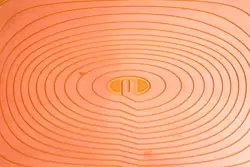Chemical Etching For Medical Devices
Technical Sales Professional for Photo Etching Service

- Instruments and blades in autoclavable stainless steel
- Filters and sieves for diagnostic and laboratory equipment
- In-situ targets for imaging applications
- Closures for incisions
- Sensor elements for monitoring devices
- Field Alignment and Litz coils for MRI systems
- Dental and Orthodontic appliances
- Veterinary instruments
Photo etching finds a wide variety of applications in medical devices and systems. Although implantable devices, such as stents, are etched in titanium, etched stainless steel alloys are used extensively in external products.
Stainless steel alloys are preferred for medical applications for a number of reasons including durability, sanitariness, and comparatively low cost. Stainless steel can be sanitized with harsh chemicals or subjected to steam cleaning or an autoclave without damage. Photochemical machining is a preferred method for fabricating many types of blades, closures, filters, sensors, and instruments for both medical and veterinary uses.
Magnetic resonance imaging systems have a wide variety of medical, industrial and veterinary applications. Major elements of MRI equipment are the copper field alignment and litz coils. These etched copper devices channel electrical fields into specific patterns that help to shape and focus the magnetic field. Photo etching is an ideal solution for producing the amorphous shapes required for this application. 1mm thick copper is widely used.

